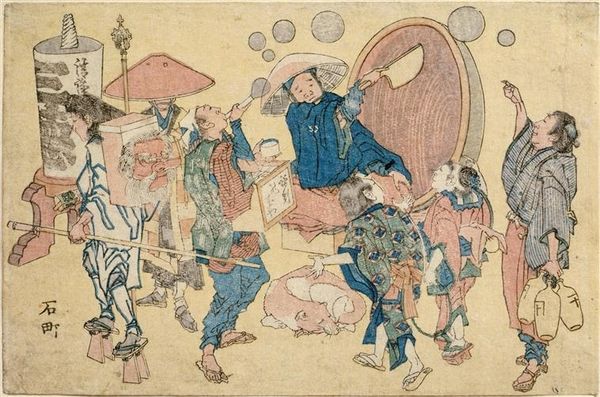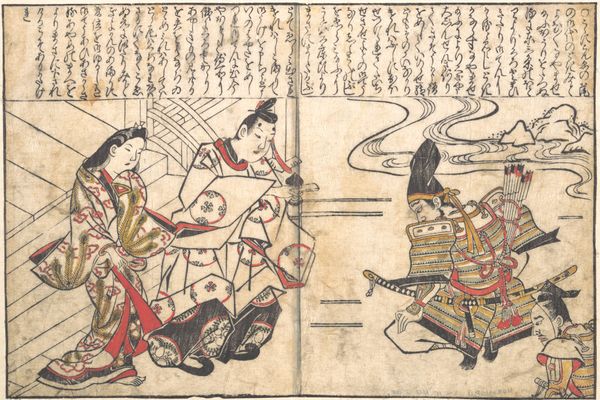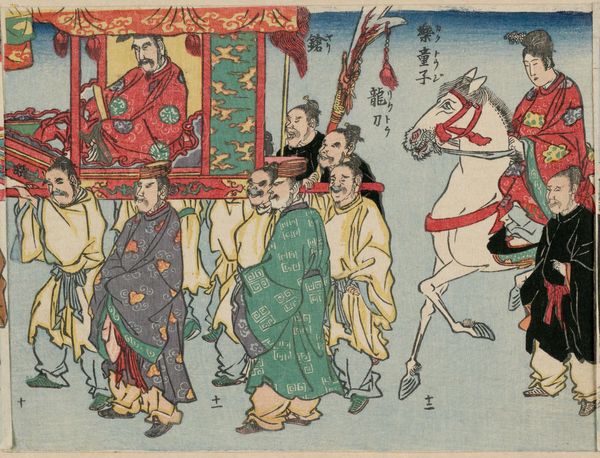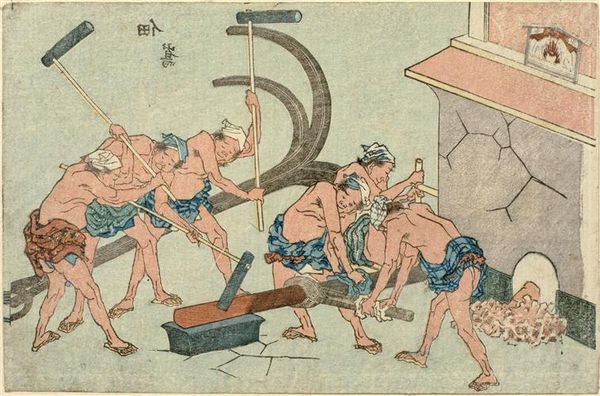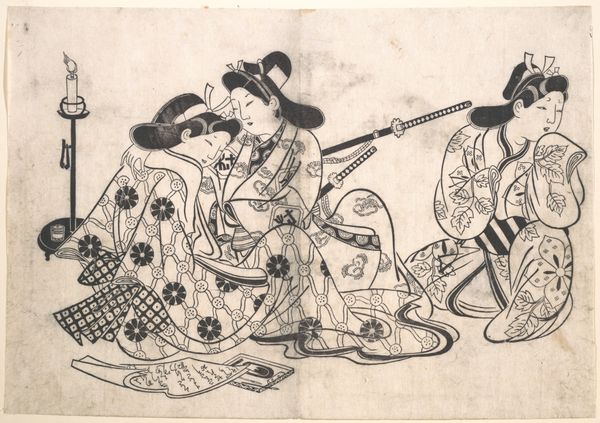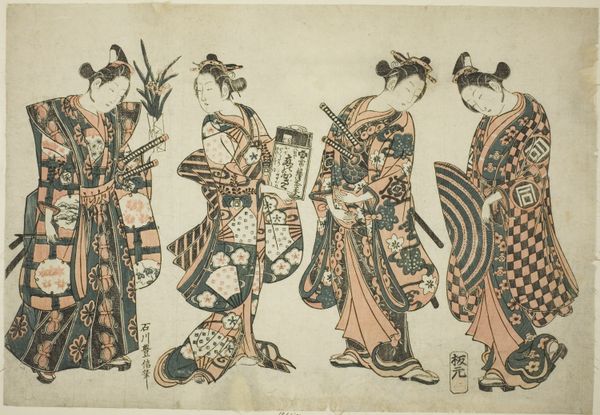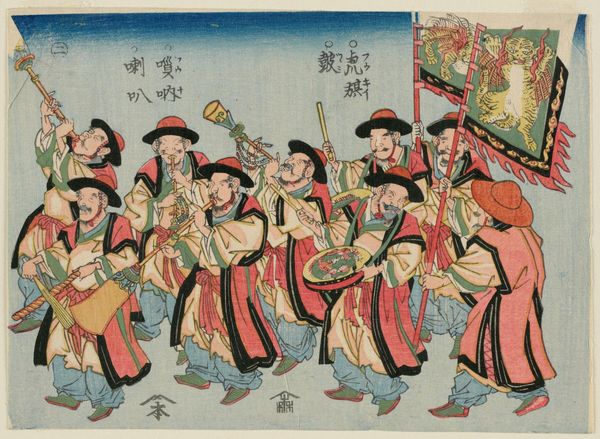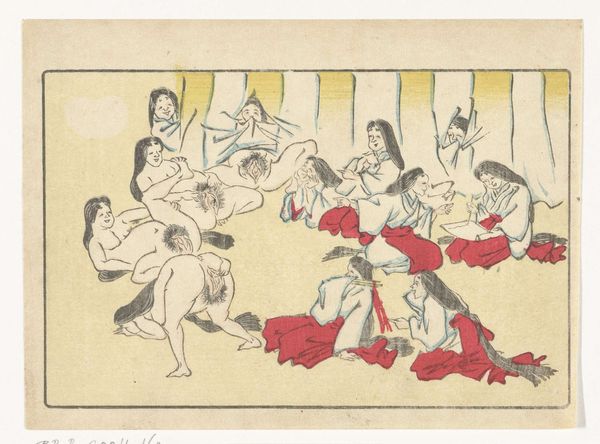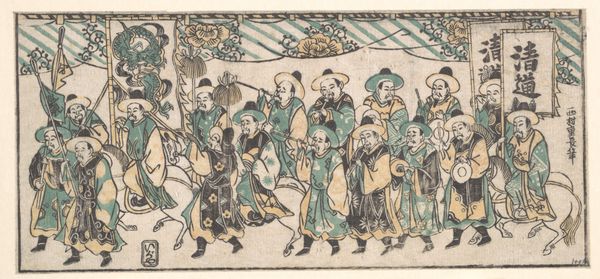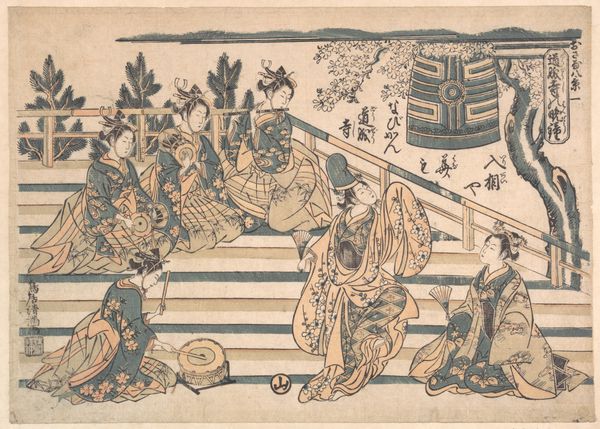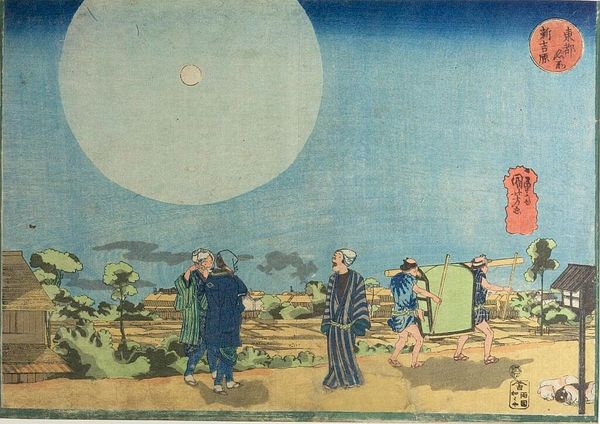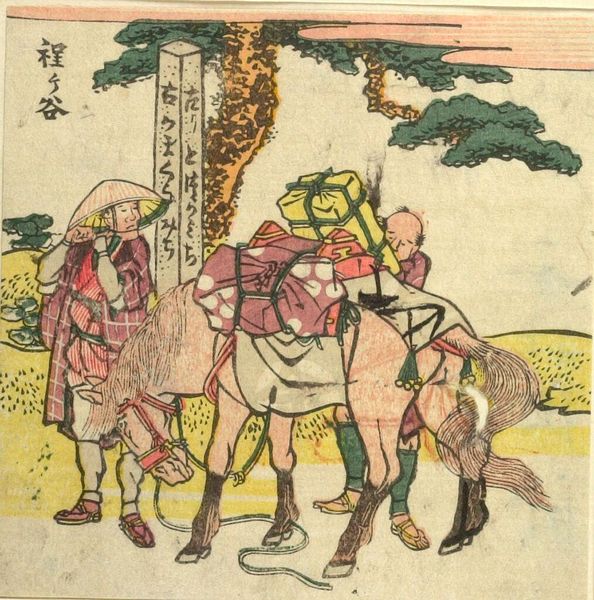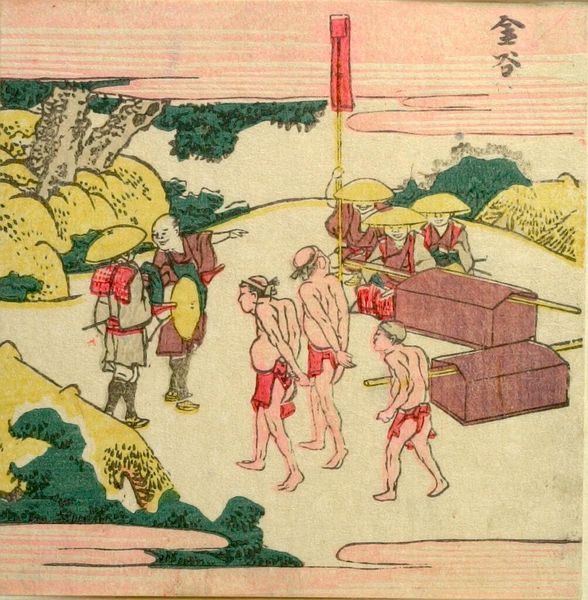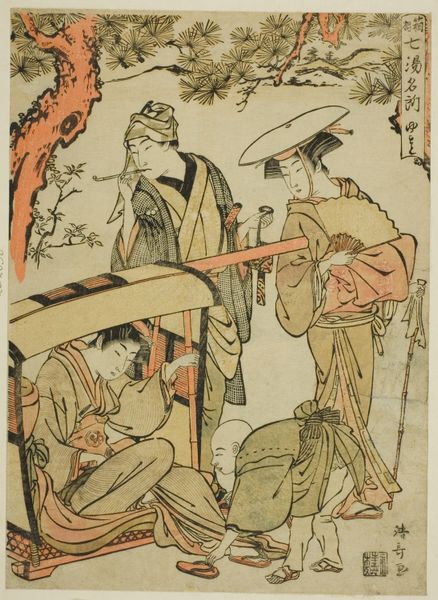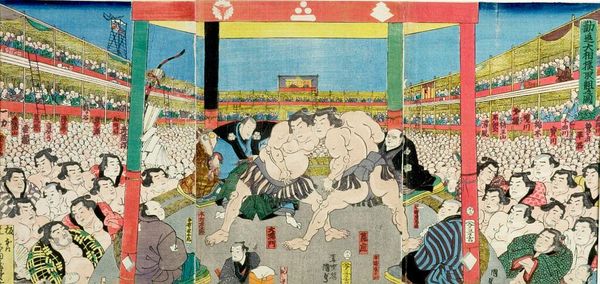
Copyright: Public domain
Curator: What a spirited scene! This is “Street Scenes Newly Published,” a woodblock print crafted around 1825 by the celebrated Japanese artist, Katsushika Hokusai. You can currently find it displayed at the Guimet Museum in Paris. Editor: Yes, spirited indeed! My immediate impression is one of frenetic energy. The dynamic poses and gestures—the flurry of movement, actually—create a really palpable sense of…chaos, perhaps? In a good way, of course. Curator: I see what you mean. Hokusai was a master of Ukiyo-e, a genre that often depicted scenes from everyday life. Pieces like this give us precious insight into the culture of Edo-period Japan and these popular festivals. This slice of life is not merely about observing a festivity; it's an active demonstration of cultural values. Editor: Absolutely. Look how he uses line; the bold outlines accentuate the shapes of the figures, but the interior lines are sparse. It’s like he's capturing a fleeting moment. The fans, too, create an interesting compositional rhythm, interspersed throughout the crowded space. What could these figures on them signify? Curator: That would be kanji, Japanese adapted Chinese characters. Given the celebratory feel of the piece, I believe those depicted on the fan could signal prosperity, good fortune or a celebratory incantation for these communal festitivities. The white cloth streamers adorning the umbrella are also common during celebrations, to invite luck. This suggests an invocation of prosperity that the culture encourages communally, as is visible through the group activity of the gathering itself. Editor: Fascinating how he simplifies and exaggerates the figures to emphasize their expressiveness. The bold graphic style and flat planes of color really exemplify the woodblock technique and push the limits of the medium. It presents the image as something instantly digestible but intricately planned in a fashion typical of woodcut print masters. Curator: Yes, and by depicting this festive gathering, Hokusai also highlights the communal aspect of Edo society—reinforcing the interconnectedness of social relations during his era. The artwork’s public display through woodblock prints was meant to proliferate values of community to commoners who are most likely depicted. Editor: A final reflection reveals that even within simplicity there's complexity, and it’s Hokusai’s ingenious handling of both that lends "Street Scenes Newly Published" its immediate charm. Curator: It indeed is a captivating image—one that bridges aesthetic skill with societal record—inviting both observation and historical context.
Comments
No comments
Be the first to comment and join the conversation on the ultimate creative platform.
